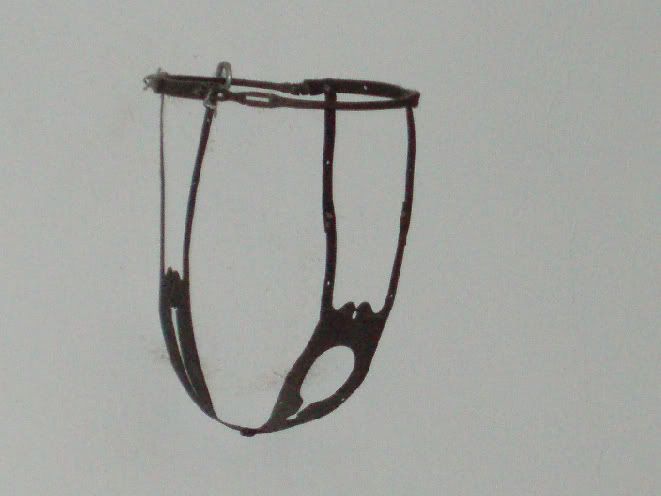It would have been better to have done this with a friend, or with family. As many of you know, I'm frail and lazy, and often want to stop for a minute, sit down, pull myself together. You can't do that when you're in a big group, so by the end I was tired and just wanting to go home -- even thought I might pass out after ascending a particularly grueling, old-as-dirt staircase. On the bright side, I made it out with the photographs; it was a beautiful and haunting place to visit. I didn't have time to photgraph the actual entrace, which has a lot of wonderful history attached to it. You can see where, during the 30 Years War, they made the original doorway smaller - to keep rival groups from breaking in. The medieval people had a brilliant understanding of defensive architecture. The passage leading out from the chapel only accomodates one person; it was built that way very deliberately. If the castle were raided (it never has been, during its 800+ years of existence), only one man at a time would be able to pass through this doorway/staircase, giving the castle occupants more time to plan, or get away. Even the location where the chapel was built was, in a sense, strategically selected. The spot where the chapel stands is considered, structurally, the most vulnerable part of the castle; the people built the chapel there to secure God's protection for that place. I don't know how genuinely effective that was -- but the castle has made it a creaking 800 years without ever knowing the withering effects of war.
Some photographs/explanation:
The Rhine river valley, viewed from the castle/mountain:
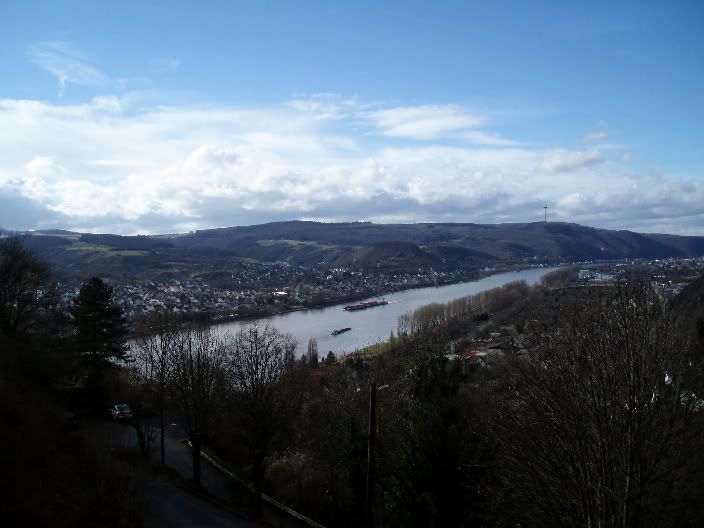
The entrance to the castle, viewed from just inside the castle:
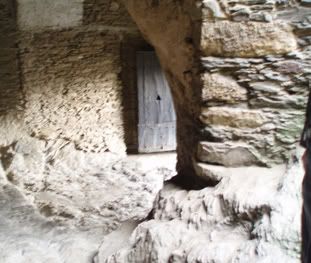
A very old cannon:
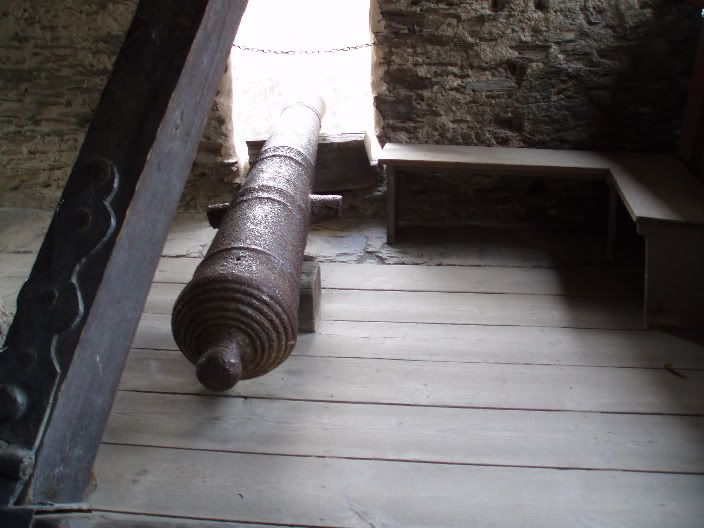
The valley, from the other side of the castle (photos don't do it justice; it is so beautiful, and so grand):
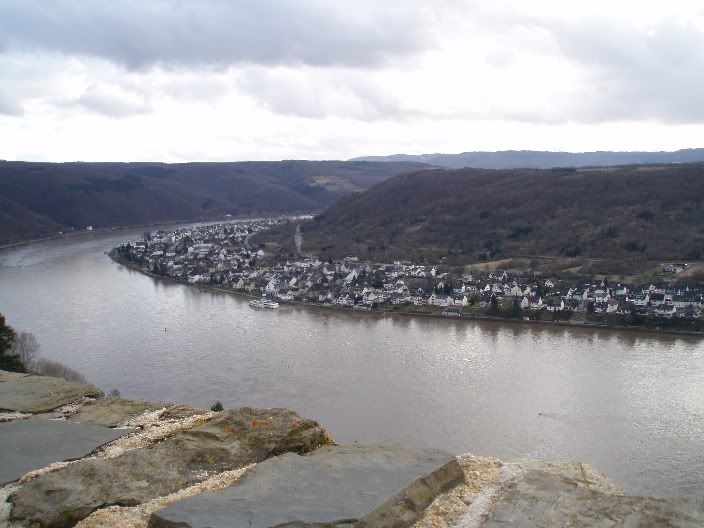
An herb garden; these were grown for use in spells/hexes (no, really):

I shot the sign to prove it:
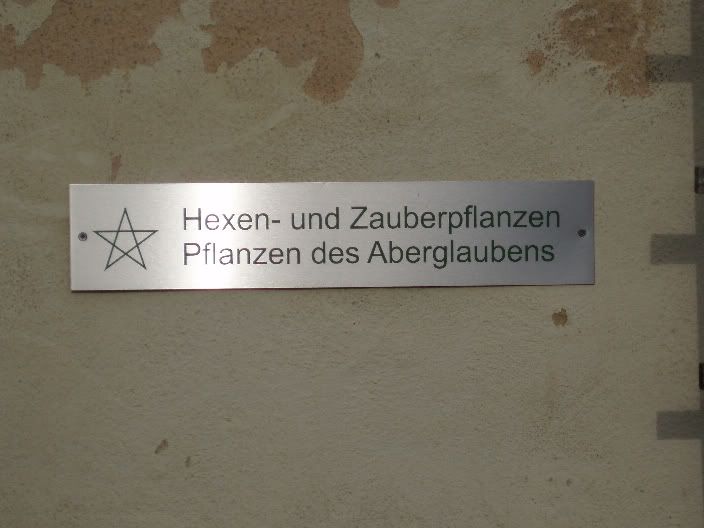
The wine room:
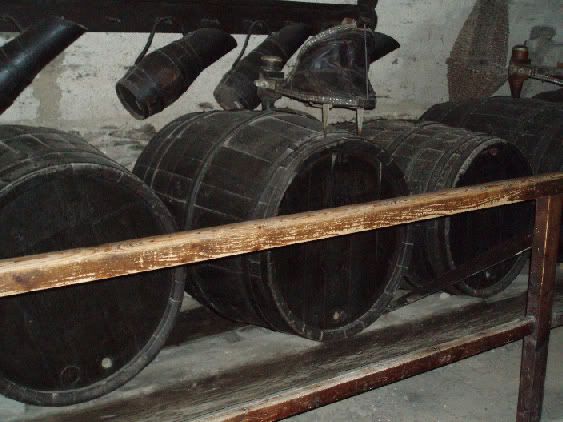
Plaques describing the wine-making process (it's a shame technology ever progressed beyond this point):
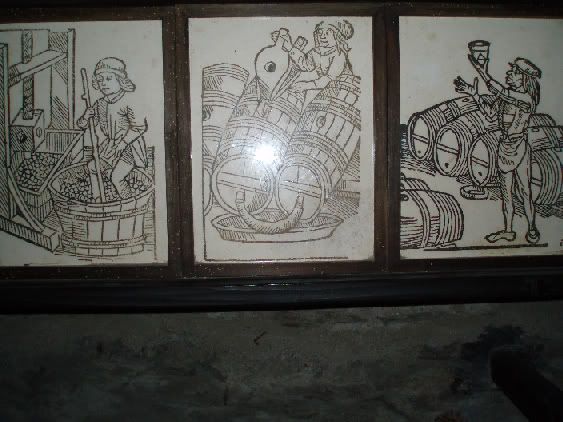
The torture rack:
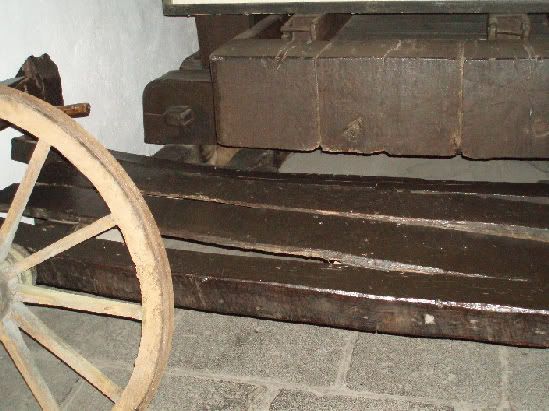
Other instruments of torture. The mask was used for/on adulterers. To the left, another mask, with a metal ball to be shoved in the mouth. To the right of it, thumb screws:
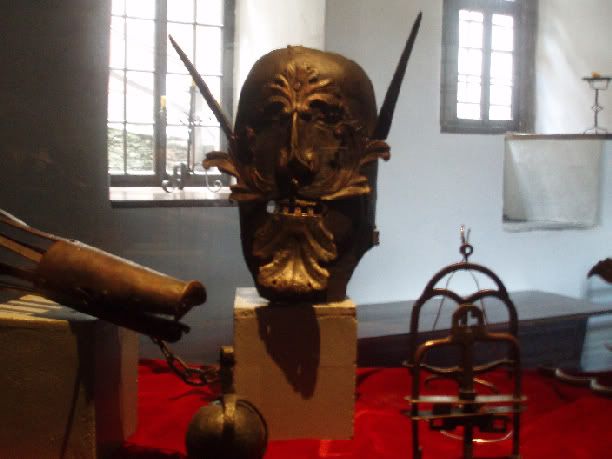
A bedroom where the nobles would have slept. I was told by the guide that they would never have actually slept lying down; that position was reserved for the dead. Might be dangerous to be found resting that way:
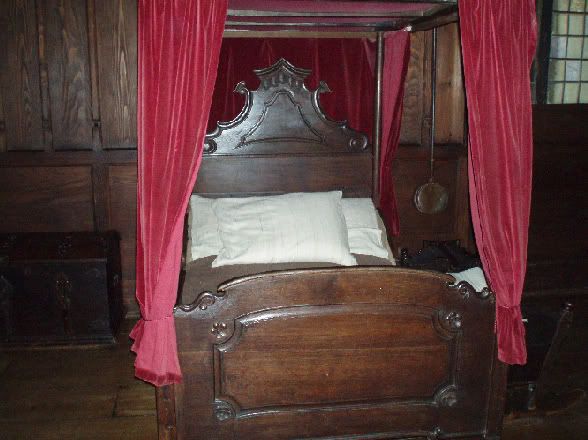
The chapel ceiling (another photo that does the place no justice - too beautiful, it has to be seen):

A Madonna and Child:
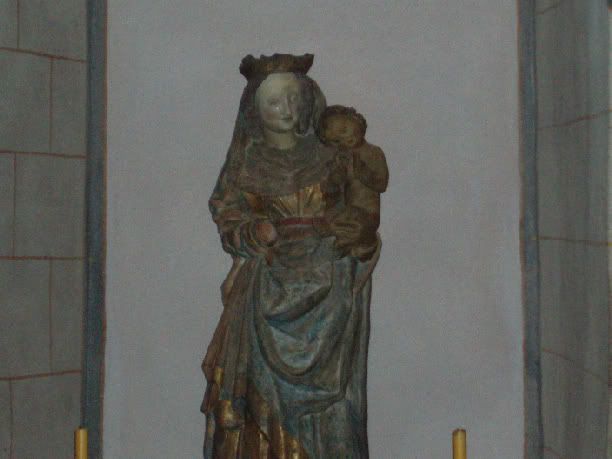
The chapel walls:
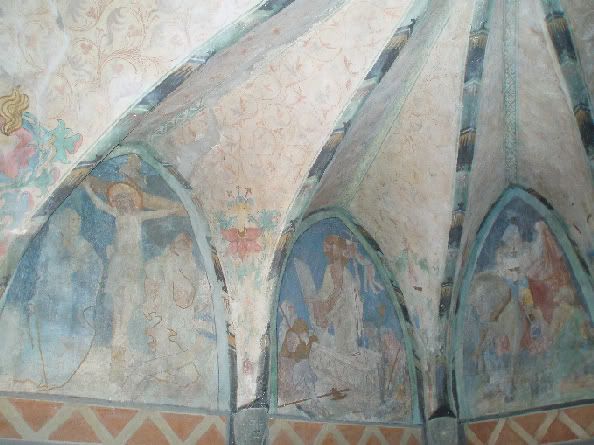
"The gang's all here" -- Armor worn by knights who would have occupied the castle at different times:
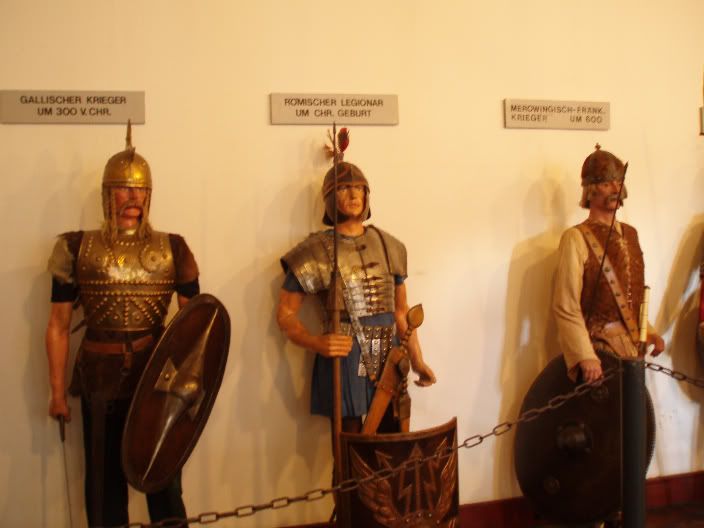
800-year old baby shoes:
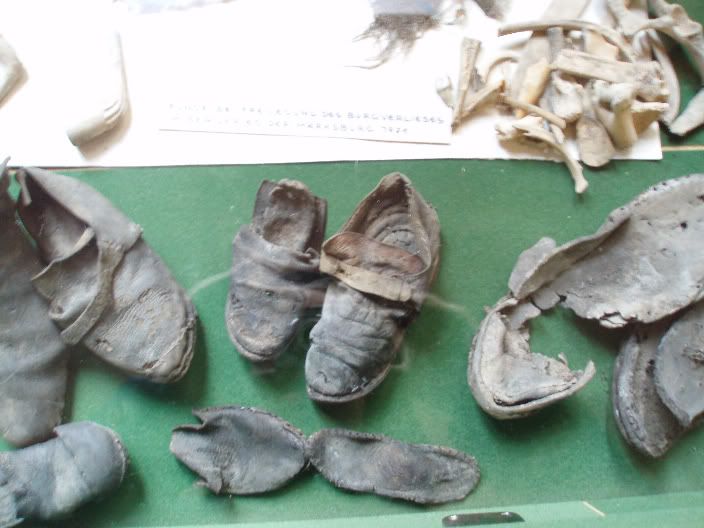
Last but not least, a chastity belt. Not used on the wives of nobles, but on village prostitutes who'd failed to pay their taxes. The ladies were allowed to work, but had to cough it up - like everyone else - for the tax man:
